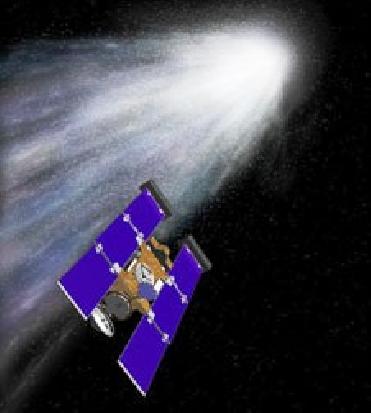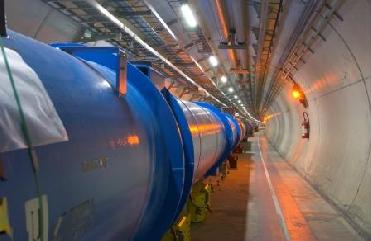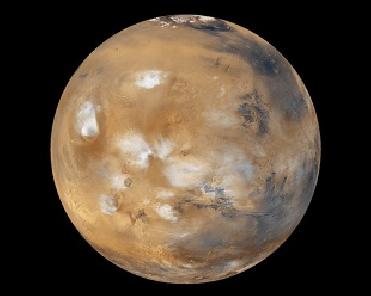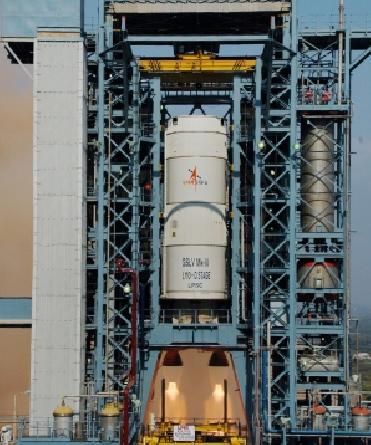
This is an artist's concept of the Stardust spacecraft beginning its flight through gas and dust around comet Wild 2. The white area represents the comet. The collection grid is the tennis-racket-shaped object extending out from the back of the spacecraft. Image Credit: NASA/JPL
WASHINGTON (BNS): NASA scientists have discovered glycine, a fundamental building block of life, in samples of comet Wild 2 returned by NASA's Stardust spacecraft.
"The discovery of glycine in a comet supports the idea that the fundamental building blocks of life are prevalent in space, and strengthens the argument that life in the universe may be common rather than rare," said Dr. Carl Pilcher, Director of the NASA Astrobiology Institute which co-funded the research, as quoted in a release by NASA.
Glycine is an amino acid used by living organisms to make proteins.
"This is the first time an amino acid has been found in a comet," said Dr. Jamie Elsila of NASA's Goddard Space Flight Center in Greenbelt, Md. "Our discovery supports the theory that some of life's ingredients formed in space and were delivered to Earth long ago by meteorite and comet impacts."
According to the release by NASA, Stardust passed through dense gas and dust surrounding the icy nucleus of Wild 2 on January 2, 2004. As the spacecraft flew through this material, a special collection grid filled with aerogel � a novel sponge-like material that's more than 99 percent empty space � gently captured samples of the comet's gas and dust.
The grid was stowed in a capsule which detached from the spacecraft and parachuted to Earth on January 15, 2006. Since then, scientists around the world have been busy analyzing the samples to learn the secrets of comet formation and our solar system's history.
The team includes Dr. Daniel Glavin and Dr. Jason Dworkin of NASA Goddard.
"The discovery of amino acids in the returned comet sample is very exciting and profound," said Stardust Principal Investigator Professor Donald E. Brownlee of the University of Washington, Seattle, Wash. "It is also a remarkable triumph that highlights the advancing capabilities of laboratory studies of primitive extraterrestrial materials."
Elsila is the lead author of a paper on this research accepted for publication in the journal Meteoritics and Planetary Science.
The research was funded by the NASA Stardust Sample Analysis program and the NASA Astrobiology Institute. NASA's Jet Propulsion Laboratory, Pasadena, Calif., manages the Stardust mission for NASA's Science Mission Directorate, Washington. Lockheed Martin Space Systems, Denver, developed and operated the spacecraft, as per the report.
 Previous Article
Previous Article Next Article
Next Article












The Indian Air Force, in its flight trials evaluation report submitted before the Defence Ministry l..
view articleAn insight into the Medium Multi-Role Combat Aircraft competition...
view articleSky enthusiasts can now spot the International Space Station (ISS) commanded by Indian-American astr..
view article